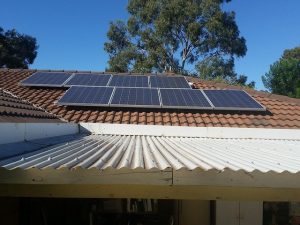
Are you thinking about investing in solar panels for your home? If so, you might be wondering whether to choose polycrystalline or monocrystalline solar panels. All solar panels are capable of capturing and converting sunlight into usable electricity. They consist of photovoltaic material that generates electricity in response to sunlight. Polycrystalline and monocrystalline solar panels aren’t the same, however. They are two different types of solar panels with their own unique benefits.
What Are Polycrystalline Solar Panels?
Polycrystalline is the most common type of solar panels. They are defined by their use of melted and molded silicon. Silicon, of course, is a photovoltaic material. It generates electricity when exposed to sunlight. Sunlight essentially “excites” silicon, thereby generating electricity. Polycrystalline solar panels are simply made of hundreds or thousands of silicon pieces that are melted and molded together to form wafers.
What Are Monocrystalline Solar Panels?
Monocrystalline is the second-most common type of solar panels. Like their polycrystalline counterparts, they are made of silicon. Monocrystalline solar panels, though, aren’t made of melted or molded silicon. Rather, they are made of a single silicon crystal. The crystal is simply cut into wafer-shaped pieces, after which they are used to form the individual pieces.
Differences Between Polycrystalline and Monocrystalline Solar Panels
The main difference between these two types of solar panels is that polycrystalline is made of shards of silicon that are melted and molded into wafers, whereas monocrystalline is made of a single silicon crystal that’s cut into wafer-shaped pieces. They are both used to generate electricity from sunlight, and they are both compatible in most homes and businesses. With that said, there are a few other differences between them.
Polycrystalline solar panels typically cost less than monocrystalline. They feature a simpler design that’s easier to produce. The end result is a lower production cost that paves the way for lower sales prices.
In terms of efficiency, monocrystalline solar panels come out on top. They can convert more sunlight into electricity than polycrystalline solar panels. Some reports show that monocrystalline solar panels are about 50% to 70% more efficient than polycrystalline solar panels.
While polycrystalline and monocrystalline are the two most common types of solar panels, there are a few others from which you can choose. Thin-film, for instance, is an alternative type. Thin-film solar panels are thinner and smaller than other types of solar panels. Their small and thin size makes them a popular alternative.
